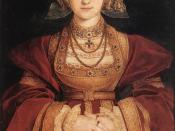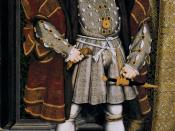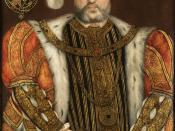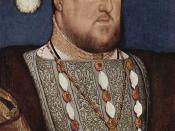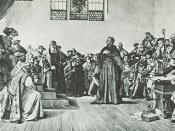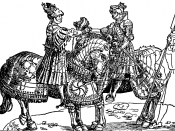The Reforms of Luther and Henry VIII The various reformations of the 15th and 16th centuries destroyed Western Europe?s religious unity and involved new ideas about the relationships between God, individuals and society. In a way, they were reminiscent of the earlier Renaissance in Italy, in that these reforms sought to change what was perceived to be wrong in the church to something better. In addition, these reformations, whose courses were influenced greatly by politics, led eventually to the subjection of the church to political rulers. Two of the most influential reforms, Martin Luther?s Protestant religion and the Anglican church of England under Henry VIII, led to radical new ideas of the relationship between religion, politics, and the individual. This relationship included similarities and differences based on ideas that included religious and political reasons such as the reasons for reform, practices of the church, and who should be head of religious figures.
While both reforms of Luther and Henry VIII ended in splitting from the Roman Catholic Church, the reasons for their separation are almost completely different. Luther, on one hand, was frustrated with the idea that a sinful person could attain the righteousness necessary to obtain salvation. He came to believe that justification by faith alone was the road to salvation, and this one of the main driving forces behind his reformation. In addition, he originally set out to reform the church, but was later forced to create his own unique religious sect, as opposed to Henry VIII, who just took control of the church in order to suit his own needs. His reasons were much less holy, and he was not looking for spiritual enlightenment; rather, he was looking for a son. When his first wife could not bear him one, Henry sought to obtain a divorce from the pope, but he failed. His reform of the church in England was different, in that he took control over the church, appointed his own bishops and other clerical figures, and took control of the land of the church.
Both leaders believed in the same idea; that political leaders should control church society but for different reasons. Martin Luther argued that nobles as well as clergy were the leaders of the church and should undertake in reform in his work Address to the Nobility of the German Nation. He later stated that political leaders, rather than all people, should control both church and society, in particular reference to the German princes of Germany and the Peasant?s War. Here Luther wished for the support and backing of the German nobles of his evolving religion, Protestantism. Henry VIII, on the other hand, wished to have control over religion and society so he could remarry in order to produce a male heir, and so he could gain control of the extensive church properties in England for the English crown. Once Henry was declared head of the English church in place of the pope, he dissolved monasteries to seize their land, which was roughly one-fourth of the total land in England at the time. Luther used the politicians in his area to back his religious polices as opposed to Henry VIII, who used his own political influence to make his own policy, regardless of what the Roman Catholic Church thought. In his system, he reordered it in such a way that the king was at the top of the power structure, and was dominant over the church?s practices and opinions.
While their motives and purposes to leading the reformations in their countries were different, they also differed on their treatment of Roman Catholic Church practices, such as the sale of indulgences. In fact, one of the main goals of Luther?s reformation was to do away with the sale altogether, due to his belief that indulgences could not be had over salvation. Luther also wanted to do away with the images found in churches, to allow clergy to marry, and to use the Bible as the sole authority it religious affairs. However, Henry VIII made his new church revert to older practices such as celibacy, transubstantiation, and other aspects of Catholic doctrine. This affirmation of old beliefs helped the majority of English people accept the basic changes he had made. Since religious doctrine and worship had changed very little, most people were indifferent to the administrative transformation that had occurred.
The period during which both reformations occurred was a period in which new ideas were exchanged, much like the Renaissance. The reformations can be seen as a religious rebirth since they revised some church doctrine with new ideas and sought to change the corrupt practices of the church. Since religion mean social status in the 16th century and there was a reform in religion, there must have been a change in the social class structure of the time. This can be seen through the shuffling of political power around, as is evidenced above. The ideas of Luther and Henry VIII modified the religious structure in their society but also the relationship of these leaders to the Roman Catholic Church. There are similarities and differences in Henry VIII and Martin Luther?s reform ideas and methods, which include political and religious reasons. Both leaders were able to change the way people thought about religion and their lives, and the affects of these reforms can still be felt today.
